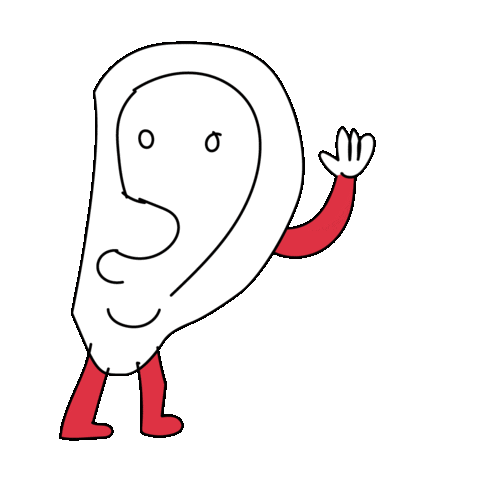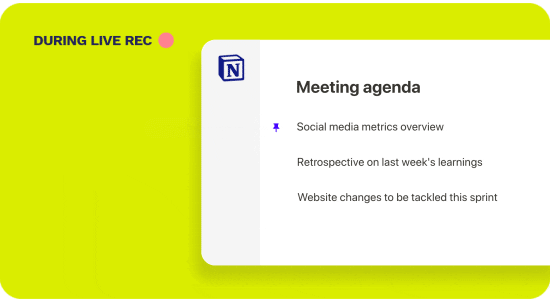Doing research interviews is challenging. Doing online interviews is even more challenging.
In order for people to feel comfortable and open themselves, you need to show real interest in what they are saying and create a good connection with them, even if it’s a temporary relationship. This is easier to achieve when you have a face-to-face conversation. In the end, it is said that more than 80% of our communication is conveyed through nonverbal paths, which are less evident when we’re behind the screen of a laptop.
Creating this safe atmosphere where the interviewee feels confident and free to share whatever he/she wants to, requires from the interviewer some general and specific strategies. The following are some of the personal skills and approaches that help me to conduct better UX research sessions and get deep insights remotely, many of them come directly from my previous experience as a clinical psychologist.
Table of Contents
Three vital characteristics for good user sessions

As an interviewer whose main goal is to understand the motivation behind people’s responses (the why’s). Much like the eye in the above GIF, we’re aiming to look for patterns, or to see the same subject or topic from different perspectives. To do this, it helps to develop the next three personal characteristics:
Empathy
Empathy refers to the ability to understand the experiences and feelings of the other person, even if you don’t agree or share them. It involves leaving your own lenses and trying to understand the experience with the product, service, or whatever you are researching from the perspective of that person.
Genuiness
Genuineness refers to being yourself in the sessions, with your accent, your natural facial expressions, and your spontaneity. It means leaving the costume and showing the human side of the interviewer. Some people might disagree with me here, but in my experience, this has been more helpful than harmful.
Acceptance
When you research something that is widely used -across a country or even the world- there is a high probability that you will talk to people that feel, think, and behave in a very different way from you. They will probably have different experiences, different needs, and motivations, and that’s O.K. too. If you want people to open themselves and tell you about their stories, acceptance should be a prerequisite.
Don’t forget to actively listen 👂
Even though these personal skills are important, we shouldn’t forget about another set of abilities that are essential in any conversation between people: active listening skills.
Humans love being listened to by others. People who join and participate in user experience research sessions are usually people motivated to talk and share their point of view of the product or service. That’s good news for us but we shouldn’t take for granted their positive predisposition.

When we don’t feel truly listened to by the person we’re talking to, we tend to talk less, explain ourselves worse, and give fewer deep reasons to our answers. That’s why showing real listening is so important when you’re conducting an interview.
Do these things to make active listening easier
Active listening involves listening with all our senses and shows the other person that we’re truly listening to them. I believe that one of the most important things is trying to keep eye contact with the person you’re interviewing. These are some of my recommendations to improve this specific aspect…
Remove distractions
We all know that we have too many distractions nowadays coming from inside and outside our computers. Studies have shown that the average person looks at their phone 58 times a day, and approximately 30 out of 58 times are usually done during work hours. Before I start any session, I try to switch on the airplane mode on my phone, I close any opened app on my computer, and I clean up my browser from unnecessary tabs. If I have some pending to read pages on my browser, I try to paste their link in a post-it so I can come back to it later.
Record user sessions and rewatch them
Recording research sessions is a very helpful strategy. It allows you to focus on the conversation and take notes only for the most relevant points. Tl;dv enables me not only to record the session but also to create highlights to the important moments. It saves tons of time and it helps me rapidly show my colleagues some live evidence for my conclusions with the timestamps.
The average person who hasn't worked to develop good listening skills is likely to understand and retain only about 50% of any conversation, and that's IMMEDIATELY after the conversation - 48 hours later, average retention drops to less than 25%!
University of Southern California Tweet
You might be thinking, “Ok, but that way we’re losing eye contact with our interviewee”. In tl;dv we’re working hard to make this experience as seamless as possible, so you can flag moments of the conversation without having to look at any other side. However, a different suggestion would be to communicate to the person what you are using and how you’re using it. It turns out that when you share how you feel about a situation, people are usually more understanding with you, and they usually don’t mind as much to break eye contact for 3 seconds if there is a good reason behind it.
Prepare mentally for the session
It seems silly, but it is a key point. We need some time to land on the meeting and we can’t do this when the person joins the conversation. Book some time before to refresh who is the person you’re going to talk to or simply to go through the agenda of the session.
Prepare a list of topics instead of a list of questions

This one might be difficult when you don’t have much experience and feel uncomfortable without a very structured script. However, one of the benefits of the interview is its flexibility and it feels like magic when you flow with the conversation instead of having to check every single question. Preparing topics allows you to be more relaxed, with your eyes more on the person, and with more attentional resources to catch interesting insights.
Strategies to ensure user insight accuracy
User research sessions are in essence a communication process between two people. Normally the interviewer guides the session and the interviewee provides information about different aspects under research. From my point of view, the more conversational the style of the session, the better.
In any communication process, there is a sender, a message, and a receptor. When sender and receptor share language and repertoire of signs the interaction is usually easier in terms of understanding. However, we live in the era of globalization and we might find ourselves talking with people with different communication styles and codes. It is therefore very important that we put the effort into ensuring the original message arrives at us in the most accurate way possible. In the end, the conclusions of the research are useless if the data we collect is inaccurate or invalid.
Clarifying
People frequently use very vague or confusing language to communicate their ideas. Sometimes they use words that could have double meanings. Because of the nature of the interviews and the purpose they have (understanding the why’s), it is very important that we try to clarify the exact meaning of these ideas by asking the person to elaborate on them.
Paraphrasing
This strategy consists of repeating the main ideas or thoughts the person has said, sometimes using our own words. It helps us verify that we understood the message correctly and also guide the session through the points we want.
Verbalizing the emotion

This approach is less used in the tech field, but I believe it’s important and useful too. It refers to verbalize the emotion the person is trying to express through the explanation of a situation. For example, if they’re trying to download a file and they say that they can’t find the option anywhere in the app we can explore if they feel frustrated when they can’t find what they want.
Synthesizing
This is a combination of the previous strategies and enables us to identify patterns or aspects that are repeated over and over again with great intensity along with the session. It’s helpful to clarify ambiguous information but also to redirect the conversation if it’s going in the wrong direction.
Finally, these are some of the behaviors that go against active listening:
- Trying to solve the problem the person is sharing in the same session.
- Judge or invalidate the person’s opinion.
- Interrupt or finish their sentences.
- Tell the person about your own experience.
The good news is that these skills and strategies can be trained. It requires effort and patience, but we have plenty of opportunities to rehearse them in our daily lives, as we’re constantly interacting with people.
tl;dv not only helps me record and capture the most relevant moments of my sessions, saving me a lot of time, and making the research more accessible to the team. It also allows me to reward myself when things have gone well and spot areas of improvement and train my research skills.
Post-research conclusions...

The last and most important piece of the puzzle is taking the appropriate amount of time to go through each research session, illuminate important findings and compare and contrast other sessions. This is the fastest way for patterns to emerge. These will later (hopefully) become research-backed product recommendations. I personally like to track all of my research sessions in a robust Notion table. I paste the tl;dv link in the table, so I can not only easily access, track and compare each user research session, but others can as well.
However, the real kicker is the fact that the timestamped highlights are also linked. Thus, I can jump right to any important research point (and so too can my teammates!) You can see this in the image above.
Final thoughts about extracting max value in user research sessions
How many times have you finished an interview with a “meh” feeling? It might be because of multiple reasons: the interviewee was not as kind and talkative as you expected, you felt less fluent driving the session, you experienced many bugs or problems during the call…
Watching the recording of the session enables me to see the reality of what happened and contrast it with what I imagined in my head. Sometimes it is a confirmation of my feelings, but most of the time I think “Oh, it wasn’t that bad!!” and this is kind of a psychological reward.
Being aware of how one conducts an interview is useful to identify areas of improvement. It can feel weird in the beginning, but you get used to it. When I watch my sessions, I try to pay attention to my behavior too and the interviewee’s reactions. The observations could refer to general aspects (e.g. try to start slowly, with a less sensitive topic) or to very specific points (e.g. try not to anticipate what the person is going to say and finish her/his sentence).




